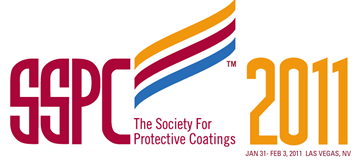Search
Products tagged with '2012 Conference Papers'
View as
Sort by
Display
per page
An Organometallic Ester Corrosion Inhibitor for Use in Direct-to-Metal Acrylic Paints
Product Number:
41212-681-SG
Publication Date:
2012
$20.00
Cartridge Technology for Spray-Applied Coatings - Low Cost, Reliable, Portable, and GREEN
Product Number:
41212-684-SG
Publication Date:
2012
$20.00
Chemical Agent Resistant Coating (CARC) – How the US Marine Corps Paints their Tactical Equipment
Product Number:
41212-707-SG
Publication Date:
2012
$20.00
Coatings For Zebra/Quagga Mussel Control, 3rd Year Evaluation
Product Number:
41212-714-SG
Publication Date:
2012
$20.00
Coatings Used in Conjunction with Cathodic Protection - Shielding vs NonShielding Pipeline Coatings
Product Number:
41212-693-SG
Publication Date:
2012
$20.00
Concrete Reinforcing Steel Corrosion Assessment, Re-passivation and Monitoring in an Industrial Environment
Product Number:
41211-594-SG
Publication Date:
2011
$20.00
Copper Antifouling Coatings - Greener then the Headlines. The Latest Regulatory Happenings and How They can Affect You
Product Number:
41212-665-SG
Publication Date:
2012
$20.00
Corrosion 2012 Conference Papers on CD-ROM
Product Number:
51801-12
ISBN:
CONF CD 12
Publication Date:
2012
$240.00
Corrosion of Stainless Steels and Titanium in Bromide-Containing Solutions
Product Number:
51312-01253-SG
ISBN:
01253 2012 CP
Publication Date:
2012
$20.00
Cross-Linking Performance to Mechanism: Correlation of lining performance in flue gas desulfurization applications to cure mechanism
Product Number:
41212-703-SG
Publication Date:
2012
$20.00
Deployment of CUI Prevention Strategies and TSA Implementation in Projects
Product Number:
51312-01100-SG
ISBN:
01100 2012 CP
Publication Date:
2012
$20.00









